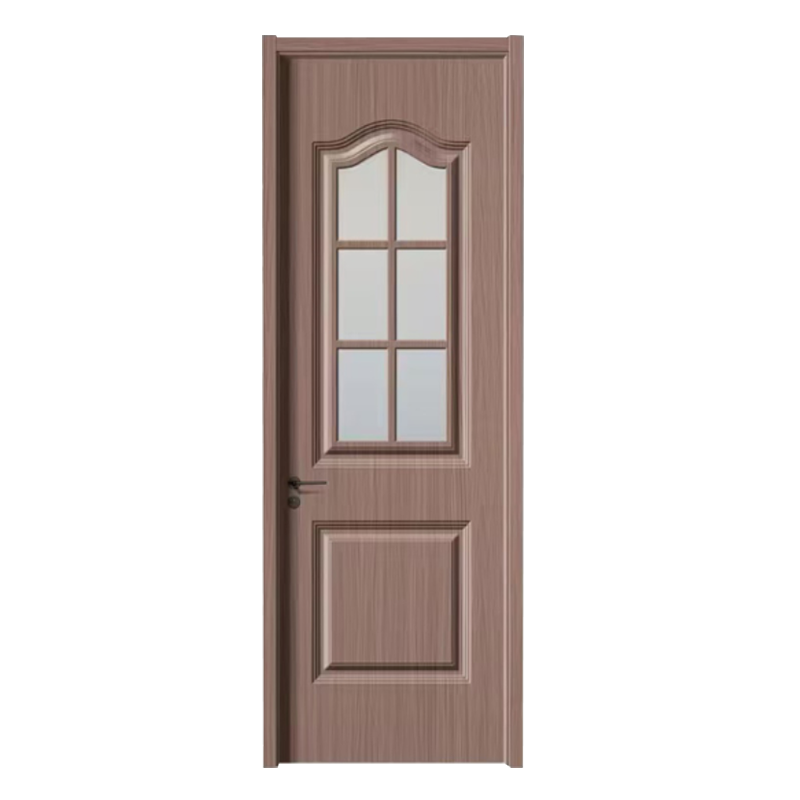WPC Doors, or Wood Plastic Composite Doors, represent a significant advancement in building materials, offering a superior alternative to traditional wood and pure synthetic doors. They are engineered by blending wood fibers/flour with thermoplastics (like PVC, PE, or PP) and various additives to create a material that combines the natural look and feel of wood with the durability and resilience of plastic. This innovative composition results in a door product rich in features, highly functional, and designed for the demands of modern living.
Product Features: A New Standard for Door Performance
The core appeal of WPC Doors lies in their powerful feature set, which solves many of the common problems associated with conventional doors:
-
Exceptional Water and Moisture Resistance: This is arguably the most significant feature. Unlike wooden doors that swell, warp, or rot when exposed to humidity or direct water, WPC doors are completely waterproof. This makes them the ideal choice for high-moisture areas such as bathrooms, kitchens, and coastal regions.
-
High Durability and Structural Integrity: The composite blend provides high strength, making the doors resistant to daily wear and tear, impact, and UV radiation. They maintain their dimensional stability over time, resisting cracking, splitting, or shrinking.
-
Pest and Termite-Proof: The plastic and treated wood powder components make the doors inherently resistant to termites, borers, and other insects, eliminating the need for chemical treatments.
-
Superior Insulation Properties: The dense composite material and often a foam or solid core provide excellent sound insulation, contributing to a quieter indoor environment. Furthermore, they offer good thermal insulation, which can help maintain indoor temperatures and potentially reduce energy costs.
-
Fire Resistance: Many WPC formulations include flame-retardant properties. The material often does not support combustion when exposed to an open flame and may self-extinguish when the flame is removed, adding an important layer of safety.
-
Versatile Aesthetics and Finish: WPC Doors can be customized with various surface treatments, including lamination, embossing for a natural wood grain texture, or painting. This allows them to seamlessly integrate into diverse architectural and interior design styles, from classic to ultra-modern.
-
Eco-Friendly Composition: Made from a mix of recycled wood fibers and recycled plastics, WPC doors contribute to sustainability by utilizing waste materials and reducing the reliance on virgin timber. They are also often manufactured without formaldehyde or other toxic substances.

Manufacturing Process: Engineered for Excellence
The production of WPC Doors is a precise, high-tech engineering process that ensures product consistency and quality:
-
Raw Material Preparation: The process begins with carefully measured amounts of wood flour (usually from sawdust), PVC or other polymer resins, and chemical additives (like stabilizers, lubricants, and pigments).
-
Mixing and Compounding: These ingredients are thoroughly mixed in a high-speed blender under controlled temperature and pressure to create a uniform composite blend.
-
Extrusion and Molding: The blended material is fed into an extruder, where it is heated, melted, and then forced through custom molds (dies) to form the basic door panel or profile (hollow or solid core). This is where the door's final dimensions and structural design are set.
-
Cooling and Cutting: The extruded profiles are quickly cooled to ensure dimensional stability, preventing warping or stress. They are then cut to the required door-leaf sizes.
-
Surface Finishing and Detailing: The cut panels undergo finishing processes such as sanding, CNC carving for intricate designs, and finally, surface treatment. This treatment often involves lamination with a durable PVC film or application of an exterior paint finish for protection and aesthetics.
-
Assembly and Quality Control: The door components are assembled, which may involve adding internal reinforcements, edge banding, and fittings for locks and hinges. A final, rigorous quality inspection checks for dimensional accuracy, surface consistency, and overall structural strength before packaging.
WPC Doors stand out as a durable, low-maintenance, safe, and environmentally conscious choice for both interior and exterior applications. Their resistance to moisture and pests, combined with their aesthetic flexibility, makes them a premium solution for modern residential and commercial construction.







